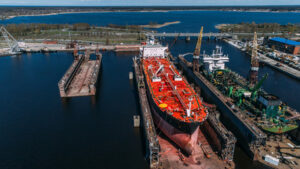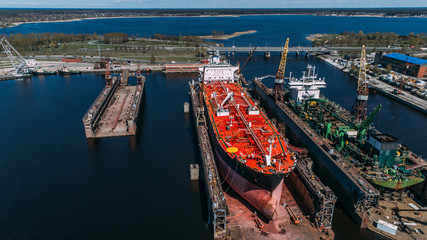A dock is central to family summer fun and needs to be safe and functional. The best way to do that is to perform regular inspections and preventive maintenance at Top-Notch Dock Building.
Look for rotting boards, protruding nails, or screws, and splinters to avoid potential injuries to swimmers and guests. A little bit of effort can ensure that your dock lasts for years to come.
A dock is a valuable asset that allows companies to ship in and out of warehouses more efficiently. It is also a safety hazard that needs to be regularly inspected and maintained. Having a dock that is not working properly can cause problems with delivery times and may even result in incorrect orders being shipped out. Regular inspections can catch potential issues before they become major problems, and compliance with many local and state regulations is required.
Licensed home inspectors conduct dock inspections. These professionals look for safety hazards that need to be addressed, such as loose boards or nails and rusty railings. These hazards are not only a tripping risk but can also lead to structural damage. Inspectors can also identify signs of rot or decay in the wood, such as soft or spongy areas. If they notice any issues, the inspector will notify the property owner of any potential problems and provide recommendations for repair.
Loading docks are a vital part of the warehouse supply chain, and they are frequently used by drivers to load and unload trucks. The loading dock must be kept in a safe and operating condition to prevent injuries to employees and costly damage to the goods being delivered. Regular inspections can detect issues before they become major problems and save companies money on repair costs in the long run.
The first step in a dock inspection is to determine whether the structure meets all applicable building codes and other relevant safety standards. Inspectors can conduct a variety of tests to evaluate the safety and durability of docks, including load testing, deflection measurements, material strength assessments, and more. They can also test the functioning of dock levelers and ensure they have a good seal to keep trailers safely secured on the loading dock.
It is important to choose the right dock inspection service for your company. A reputable service will be knowledgeable and experienced, and they will provide clear and detailed reports after each inspection. They should also offer additional services, such as maintenance recommendations and training programs, to maximize the value of their service.
Cleaning
The most obvious reason for regularly cleaning a dock is that it helps preserve the wood. Over time, dirt and other elements work to destroy the surface and interior of a wooden dock. A regular cleaning removes these elements and keeps the equipment running smoothly. Cleaning also helps to ensure that moving parts can be easily accessed. When these parts are obstructed, they can’t function as well and this can impact the efficiency of the equipment.
The cleaning process itself usually begins with a thorough inspection. This includes looking at all of the dock components and checking them for damage or other issues. For example, if a ladder or railing is loose it needs to be fixed before the cleaning process starts. It’s also important to check that all fasteners are secure and free from corrosion. It is important that any rusting hardware or nails are removed and replaced as needed. The inspection also gives the technician a chance to look for signs of wear that might signal that it’s time to start the cleaning process.
If a wooden dock is stained or painted, it’s important to apply a fresh coat of stain or preservative at least every two years. This protects the dock from rot and mildew and makes it look great. It’s important to use a water-based stain or preservative and choose a color that blends with the surrounding environment.
In addition to applying a fresh coat of stain or preservative, it’s important that any equipment such as a boat lift is lubricated to prevent friction and wear. This will keep the equipment working smoothly and reduces the need for replacements in the future. It’s also a good idea to spray the entire dock with a sanding sealer after the cleaning process is complete. This will give the dock a newer and richer appearance and help it last longer.
When it comes to cleaning a dock, it is best to hire a professional who has the right equipment and experience. A professional will be able to clean your dock efficiently and quickly without causing damage. They will also be able to spot any potential problems that may need repairs and will be able to address those before they become more severe. A professional will also be able to sand and finish the wood correctly so it looks great and is protected for the long term.
Maintenance Schedule
When dock maintenance is done regularly, it’s able to catch minor problems before they become big ones. This prevents a dock’s pilings and cross bracing from becoming subject to excessive marine growth, physical impact or marine borer infestation. It also gives techs time to schedule repairs before a dock is unusable, minimizing the loss of production and money in the process.
At its core, dock maintenance comes down to a schedule, whether it’s daily, weekly or monthly. It’s a matter of determining the most appropriate schedule for a given dock based on use levels and equipment type. For instance, a dock that services a high number of full truckloads during a day has a different maintenance requirement profile than one that supports less frequent loads.
Fortunately, new dock monitoring systems have started to build a database that will allow facilities to move on from preventative maintenance schemes into predictive ones, explains Schulze. These systems can send a text or email to techs when a dock has an issue — such as when the power goes out with a trailer in place — giving them enough information to determine what the problem is and how to address it.
This can cut maintenance costs by 12% to 18%, reduce energy bills and eliminate a lot of the unnecessary bottlenecks caused when dock equipment is suddenly unavailable. Plus, it can minimize the number of on-site accidents and injuries resulting from equipment failure, as well as avoid the cost of allowing unwanted pests to enter the facility.
A dock is a vital asset to a company’s business, but it is also an expensive one to maintain and repair. That is why it’s so important to keep up with scheduled inspections and cleaning, and to ensure that the proper maintenance is being done in between.
At Creative Door Services, we offer a wide range of loading dock products and services to keep your company productive and safe. Whether you choose to install fixed or floating docks, wood or concrete or extruded PVC or composite decking, we can help.
Safety Checks
Warehouses are busy places, and while caution needs to be exercised in all areas of the facility, perhaps no other area of a warehouse requires more vigilance than the dock area. Because this area handles material handling, the potential for accidents and injuries is much greater than any other part of the facility. That’s why it is so important that every member of staff takes care to follow safety guidelines in this area and that all equipment is inspected regularly for signs of wear or damage.
In addition to general inspections and cleaning, a regular dock maintenance schedule should include periodic safety checks for dock equipment. These should vary depending on the type of equipment, but should include checking for missing or damaged fasteners, loose welds, and lubrication levels. The dock leveler is a good example of a piece of equipment that should be checked on a regular basis. The pit mount of the leveler (pins, crank, links and chains) should be inspected for unusual wear and tear, and all parts of the mechanism should be cleaned and lubricated according to manufacturer guidelines.
The ramps used to bridge the gap between trailers and dock door are another piece of equipment that should be inspected frequently for signs of wear and tear, as they need to support a great deal of weight and force as forklifts drive across them. The same goes for the dock door itself, which can become distorted or broken from the constant pounding of forklifts and products. The dock door’s hinges, clevis pins and cotter pins should all be inspected for signs of unusual wear, and the door should be lubricated on a regular basis according to manufacturer guidelines.
Vehicle restraints should also be inspected on a regular basis to ensure that they are in good working order and that they work properly to prevent vehicles being loaded or unloaded from leaving the dock prematurely. This is a common cause of accidents and injuries in the warehouse, and it is an easy thing to avoid by keeping this equipment well maintained.

